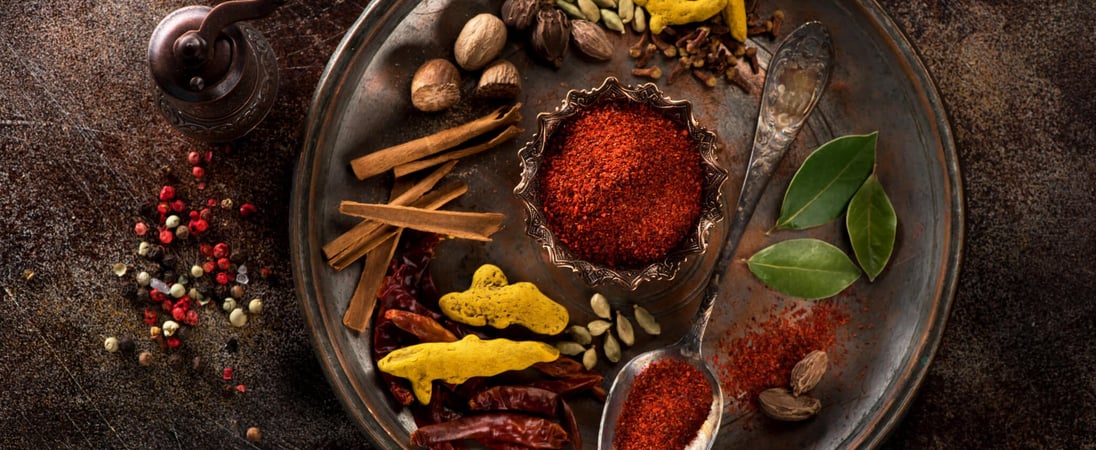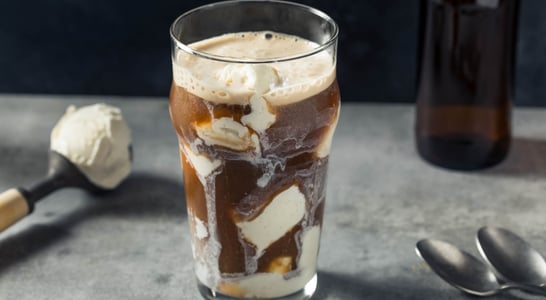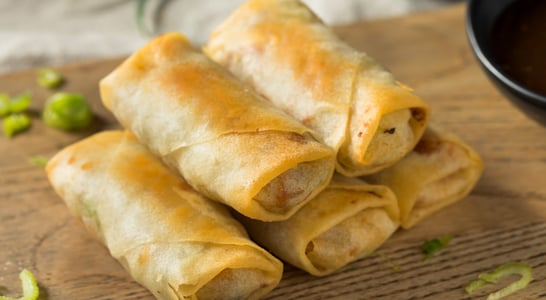
National Herbs and Spices Day
Add some zest and aroma to your dishes, and enhance your culinary creations with a variety of herbs and spices to awaken your taste buds!
A day to bring tons of flavor to everyone’s plates, National Herbs and Spices Day brings out the best taste in a vast array of dishes. From the daily salt and pepper to the more exotic saffron or black cardamom, herbs and spices offer the essence of seasoning to everyone’s table.
And National Herbs and Spices Day is the perfect time to celebrate!
History of National Herbs and Spices Day
People have been using herbs and spices to flavor their food probably since history has been recorded. Some of the earliest ideas guess that hunters would use leaves to wrap their meat in, and discovered quite by accident that the leaves gave the meat a certain type of flavor.
As time went on, more and more plants were discovered to be aromatic and flavorful, as well as often having other beneficial properties. Spices were discovered when the roots, leaves or other parts of plants were dried, then ground and used in cooking. Spices have also been used medicinally all throughout human history.
Ancient Egyptians are recorded to have used cinnamon, poppy and mint, while some early Chinese influences also mention the use of cinnamon (cassia), nutmeg, cloves and many other types of spices. Ancient Mesopotamian sources reveal that thyme, sesame, cardamom and coriander were important.
Throughout history, spices have been considered a valuable commodity and were even used as currency during some time periods. At one time, nutmeg was worth more than its weight in gold. Cloves were often given as bonuses to London dockworkers. And peppercorns were demanded as ransom in the 410 AD capture of Rome.
Beginning in 130 BC the “Silk Road”, was an important way for spice traders to get their wares from the East into the West, particularly between Greece and China. For more than 1500 years, this network of routes contained trading posts, thoroughfares and marketplaces strategically placed for travelers and traders.
Eventually, spice companies began to develop, bringing exotic and unique herbs and spices from far off places, first for the wealthy or royalty and then, eventually, to the common person. Today, just opening a person’s kitchen cabinet can introduce a collection of fragrant and flavorful spices and herbs that likely originated from all over the world!
Enjoying these and learning more about them is the perfect way to celebrate National Herbs and Spices Day!
National Herbs and Spices Day Timeline
2800 BC
First mentions of cinnamon in Chinese writings
Native to Ceylon, what is now Sri Lanka, some mentions of cinnamon are made in the Cantonese language where it is known as “kwai”.[1]
1500 BC
Spices are used medicinally in Ancient Egypt
Papyrus documents note the use of fennel, caraway, coriander, garlic, mint, onion, poppy and peppermint in medical treatments.[2]
1773
Spices replace black tea in America
With the political problems surrounding the Boston Tea Party, Americans begin making their tea from herbs and spices like lemon balm, sage, chamomile, spearmint, sassafras, and others.[3]
1889
McCormick and Company is founded
This Maryland based spice company starts with door-to-door sales with storage in founder Willoughby McCormick’s basement. It will go on to become the largest spice and seasoning manufacturer in the world.[4]
1897
Bram Stoker’s Dracula is published
With 21 different mentions of garlic, this novel brings to the forefront the legend that vampires have a deep aversion to this root herb.[5]
How to Celebrate National Herbs and Spices Day
Observing National Herbs and Spices Day involves a tempting array of foods, whether cooking them, eating them, or both! Try out these ideas for celebrating National Herbs and Spices Day with the people you love:
Check Out a New Herb or Spice
Get healthier and more adventurous when you try out some new herb flavors instead. Some of these are rather versatile while others are very specific spices that work in certain dishes:
- Turmeric. Anyone who has tried cooking dishes originating from India may have experienced turmeric. Also called curcumin, this bright golden colored spice is a relative of the ginger family that can be used to add flavor to curries, relishes, soups, pilaf, vegetables and much more.
- Herbs de Provence. A blend of 5-6 different dried herbs, including rosemary, thyme, basil and more. This delectable combination of herbs brings out the full flavor of meats when used as a rub and also works well on grilled vegetables or meat dishes.
- White or Pink Pepper. Most Westerners are familiar with black pepper, whether whole or ground, and use it fairly regularly in their cooking. But white pepper is a spice that is traditionally used Jewish or Asian cooking, and it changes the flavor of dishes quite significantly. Pink pepper is similar, but has a slightly sweeter flavor.
Get Healthier Using Herbs and Spices
According to a 2015 study, replacing salt with herbs and spices can cut a person’s daily intake of sodium by almost 1000 mg each day. This type of dietary reduction can help to minimize certain health issues such as high blood pressure, which is a major risk factor for stroke and heart disease.
Not only does substituting herbs and spices help reduce sodium, but certain types of herbs and spices can also help to reduce inflammation and minimize damage to the cells in your body when eaten on a regular basis.
Turmeric, cardamom, cinnamon, garlic, chili peppers and cumin are a few spices to get started with incorporating into a healthy diet.
Try Growing Your Own Herbs at Home
Whether outside in the garden or in some potted planters inside, growing herbs at home can be an amazing way to enjoy and celebrate National Herbs and Spices Day using fresh, homegrown items.
Some of the easiest to herbs that can be grown in the backyard or in a container garden at home include:
- Basil. This versatile herb can be used in a variety of dishes, including pesto, tomato sauces and vinegars. Or it can be served fresh with tomatoes and mozzarella to make a caprese salad. Plant basil in a space that gets a lot of sun and has well-draining soil.
- Mint. Useful in a variety of ways, mint is so prolific that many people like to grow it in containers to keep it from spreading and taking over the whole garden. With more than 600 different varieties, like peppermint, spearmint and chocolate mint, you’re sure to find one you’ll love to put in your iced tea or summer salads.
- Parsley. This flat-leafed herb grows easily and is a delight to use for cooking soups and other dishes, as well as placing on dishes as a delightful garnish. Plus, even if it is grown outside it can easily be dried and kept to use over the winter months.
- Rosemary. This one grows more like a shrub than a plant. It’s a woody evergreen that offers delightful aromas and loves to be in full sun. Rosemary is an herb that is also known to be healthy for the memory as well as being a mood booster.
National Herbs and Spices Day FAQs
Are herbs and spices the same thing?
Though they are used in similar ways, the difference is that herbs are the fresh part of the plant, while spices come from the dried fruit, stalk, root or fruit. Herbs can be fresh or dried.[1]
What herbs and spices are in KFC?
While KFC’s 11 herbs and spices have been a “secret” for decades, the recipe probably contains salt, white & black pepper, thyme, celery salt, oregano, basil, garlic salt, ginger, dry mustard and paprika.[2]
Do herbs and spices have calories?
Most herbs and spices have very few calories, but they can range from 1 calorie in ¼ cup of cilantro and 3 calories in a teaspoon of oregano to 73 calories in a bulb of fennel.[3]
What herbs and spices are good for dogs?
Basil, cinnamon, ginger and parsley are all safe and healthful for dogs, while onion, salt, garlic, cocoa powder and nutmeg should be avoided for canines.[4]
How to use herbs and spices in cooking?
It’s healthy and delicious to substitute herbs and spices for salt. Add fresh herbs early in recipes to blend flavors, or at the last minute for more distinct flavors. Add ground spices and herbs at the end of a longer cooking process to retain flavor.[5]
Also on ...
View all holidaysNational Black Cow Day
Root beer floats are bubbly, creamy delights that will tickle your taste buds! They're the perfect pick-me-up on a hot summer day, and a nostalgic treat that will make you feel like a kid again. Bottoms up!
National Iced Tea Day
When the weather gets too warm for hot tea, just ice it! Mint tea, fruity teas, even the Southern classic sweet tea will all refresh you on a warm and sunny day.
National Egg Roll Day
Wrap yourself in a crunchy, savory embrace with egg rolls - the perfect portable snack that brings joy to your taste buds with every bite. Let's roll!
National Ballpoint Pen Day
Whether you’re writing a letter, jotting down a grocery list, or crafting a Shakespearian sonnet, make sure you use a ballpoint pen on National Ballpoint Pen Day.




